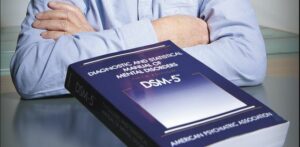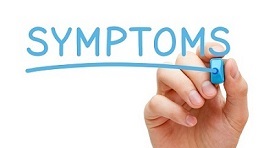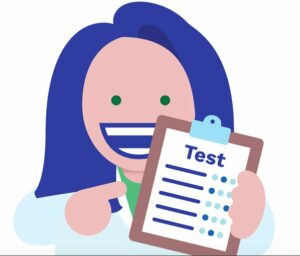The fifth edition of the Diagnostic and Statistical Manual of Mental Disorders, or DSM-5, was released in May 2013. This manual is used by mental health professionals to diagnose mental disorders. One of the new diagnoses in the DSM-5 is acute stress disorder. In this blog post, we will discuss what acute stress disorder is, how it is diagnosed, and how it is treated.
Contents
Defining DSM-5
 DSM-5, a popular acronym for the Diagnostic and Statistical Manual of Mental Disorders, is a reference book published by the American Psychiatric Association (APA) that provides diagnostic criteria for mental disorders. The DSM-5 was released in May 2013, and it included a number of changes from the previous edition. It is rightly regarded as the most widely used psychiatric reference in the world. It is famous by the name “Bible of Psychiatry”.
DSM-5, a popular acronym for the Diagnostic and Statistical Manual of Mental Disorders, is a reference book published by the American Psychiatric Association (APA) that provides diagnostic criteria for mental disorders. The DSM-5 was released in May 2013, and it included a number of changes from the previous edition. It is rightly regarded as the most widely used psychiatric reference in the world. It is famous by the name “Bible of Psychiatry”.
Acute Stress Disorder In DSM-5
The Fifth edition of the DSM (DSM-5) has made some significant changes to the way that mental health professionals diagnose and treat mental disorders. One of the most significant changes is the further addition of a new diagnosis: acute stress disorder.
Acute stress disorder is a condition that can occur after a person is exposed to a traumatic event. It is a distinctive reaction to trauma that is characterized by a number of symptoms. Up until DSM-IV, ASD was considered to be a subtype of PTSD. In DSM-IV-TR, ASD was its own diagnosis, but it was not included in DSM-5.
The inclusion of ASD in DSM-5 is a recognition of the fact that not everyone who experiences a traumatic event will go on to develop PTSD. For some people, the initial reaction to trauma is ASD.
Key symptoms
 There are four main symptom clusters that characterize ASD. These are divided into the followig categories:
There are four main symptom clusters that characterize ASD. These are divided into the followig categories:
Intrusion symptoms
- Recurrent, involuntary, and intrusive memories of the trauma
- Nightmares related to the trauma
- Dissociative reactions (e.g., flashbacks) during which the individual feels or acts as if the trauma is happening again
- Intense and prolonged psychological distress
Negative mood
- A persistent inability to experience positive emotions
Dissociative symptoms
- Altered sense of reality
- Inability to remember important aspects of the trauma
Avoidance symptoms
- Avoiding thoughts, feelings, or conversations associated with the trauma
- Avoiding activities, places, or people that remind the individual of the trauma
Arousal and reactivity symptoms
- Hypervigilance
- Exaggerated startle response
- Problems with concentration
- Sleep disturbances (e.g., insomnia)
These are the 14 symptoms that should be met for the diagnosis of ASD.
Diagnostic criteria
Now that we know of the clinical ASD symptoms, it is crucial to learn about the diagnostic criteria for this mental disorder. According to DSM-V, a person must exhibit the following.
- At least 9 of the 14 symptoms in these categories are required to be present.
- These symptoms must last for a minimum duration of three days and a maximum of one month following the trauma.
- The diagnosis can only be made if the symptoms cause clinically significant distress or impairment in functioning.
- The symptoms cannot be due to the use of alcohol or drugs, or another medical condition, or be better explained by another mental disorder.
- The causes of the trauma be known or observable by others (e.g., car accident, natural disaster, mugging).
- The individual must not have experienced symptoms that meet the criteria for PTSD at any point in their life prior to the trauma.
With these key points in ASD’s definition, it is easier to understand how this mental disorder can be diagnosed by a professional.
Person(s) eligible for diagnosing
 There are various types of mental health professionals. However, not all of them are eligible to diagnose ASD. The most common type of mental health professional who can diagnose ASD is a clinical psychologist. Other professionals who can make this diagnosis are:
There are various types of mental health professionals. However, not all of them are eligible to diagnose ASD. The most common type of mental health professional who can diagnose ASD is a clinical psychologist. Other professionals who can make this diagnosis are:
- Psychiatrists
- Clinical social workers
- Licensed counselors
- Other mental health professionals with specific training in diagnosing and treating PTSD
These are the main types of professionals who have the appropriate training to diagnose ASD. It is important to check for the individual’s credentials before starting any treatment.
Diagnosis process
If you are seeking an official diagnosis of ASD, you can expect the following process.
The first step is to consult with a mental health professional who will ask you questions about your symptoms and medical history. The tools and assessments used in the diagnosis process will further vary depending on the professional.
The mental health professional may also ask you to complete a self-report measure, such as the PTSD Checklist for DSM-V. In some cases, additional physical, psychological, or neurological evaluations may be conducted to rule out other conditions that could be causing your symptoms.
Once all the information has been gathered, the mental health professional will make a determination as to whether you meet the criteria for ASD. After completing the assessment process, the mental health professional will give you a diagnosis and develop a treatment plan.
It is important to be honest with the mental health professional as they are trying to determine whether or not you meet the criteria for ASD.
Treatment options
 There are various types of treatment available for people with ASD. The most common type of treatment is psychotherapy. Other treatment options include:
There are various types of treatment available for people with ASD. The most common type of treatment is psychotherapy. Other treatment options include:
Pharmacotherapy: This treatment option involves the use of medication to treat the symptoms of ASD.
Eye movement desensitization and reprocessing therapy (EMDR): This is a type of therapy that uses eye movements to help the individual process and heal from the trauma.
Cognitive behavioral therapy (CBT): This type of therapy helps the individual to change the way they think about and respond to the trauma.
Exposure therapy: This treatment involves gradually exposing the individual to the trauma in a safe and controlled environment.
Medication: There are various types of medication that can be used to treat the symptoms of ASD. The most common type of medication is antidepressants.
Natural remedies: There are various natural remedies that can be used to treat the symptoms of ASD. Some of these remedies include:
- Organic foods
- Supplements
- Herbal remedies
- Acupuncture
- Yoga
- Tai chi
- Meditation
The type of treatment that is right for you will depend on your specific needs. Your mental health professional will work with you to further determine the best course of treatment.
Conclusion
In conclusion, acute stress disorder in DSM-5 is a mental disorder that can be diagnosed by a professional. The symptoms, diagnosis criteria and process as well as treatment options are discussed in this blog post. If you or someone you know is experiencing the symptoms of ASD, it is important to seek professional help.
If you or someone you know is looking for psychological help, Therapy Mantra is here for you. We are the leading providers of online therapy and counseling. Our team of highly trained and experienced therapists can provide assistance at the most affordable rates. Contact us today to learn more about our services. You may also visit our website to book an online therapy session or download our free Android or iOS app for more information.


